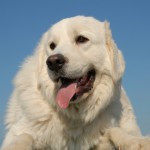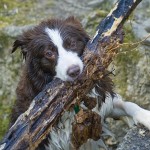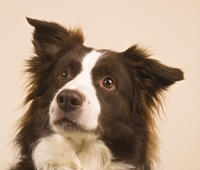Herding (Pastoral) Breed Overview
The Herding Group is the newest classification with the kennel clubs, created in 1983 in the US and 1999 in the UK, except for the Leonberger which was in the Utility group, all the other breeds were formerly members of the Working Group. The Herding group has the highest number of breeds, over 30. Breeds such as the Collie family (Border Collies, Rough Collies, Shelties), Old English Sheepdogs, Samoyeds who have been herding reindeer for centuries, Shepherd (Australian, Belgian, German) to name of few.
Herding dogs are associated with working cattle, sheep, reindeer, geese etc; they all share the fabulous ability to control the movement of other animals. In this group the size of the breeds vary enormously, i.e. the small but big in charactere Welsh Corgis which will drive cattle, many time their size, by nipping at their heels, compared to the larger breeds like the Pyrenean or Estrela Mountains Dogs who protect shepherds and their flocks from predators.
They all have great stamina and an abundance of energy, they are very intelligence and easy to train. One of the most popular breed in the sheepdogs group are the Border Collies, whilst some are pets, many work in farms where are are most valued as they do the work of several trained men. Their ability to be trained to work on the sound of a whistle or word of command is renowned throughout the world.
As well as herding, many in this group are also trained for rescue work, explosive search, police work etc.
Because the breed is required to work and mostly live in all weather, most have a serviceable coat and a dense undercoat which do not require excessive grooming. Whereas the Hungarian Puli and Komondor which have a distinctive coat which form cords require an unusual grooming demand. They require constant, vigilant attention during their first 18 months whilst their coat is growing, a least a grooming session every 2 – 4 weeks and once the coat is fully grown a grooming session every 8 weeks, all with weekly maintenance interval. So when considering these breeds you will have to bear this in mind.
The vast majority of Herding dogs are pets and never cross path with farm animal. However it is wise to bare in mind that they were bred originally to do a job of work and thrive on challenging activities. They prefer a lead a busy life, so they need plenty to occupy their minds; some might gently herd their owners, especially the children or they can become very protective towards their owners and property.
In general, these intelligent dogs make excellent pets and response well to training. Many do well in obedience trials, agility, fly ball or Schutzhund disciplines.
Claudie on June 23rd 2010 in Herding (Pastoral) Dogs


